Parsley is broadly used in different cuisines to add a unique fragrance and taste to various dishes. It is grown by many people, whether experienced gardeners or just beginners. However, like all other plants, Parsley needs proper care to grow well. As parsley sprouts quickly, so remember to prune it occasionally. But how to prune parsley to maintain a healthy plant?
The careful trimming and pruning of Parsley results in the constant production of new leaves and keeps them healthy. Furthermore, these practices change the entire plant’s appearance into one that looks fresh all over again. This blog explores the benefits, proper way, and post-pruning care of parsley. Let’s get started!
Why Should You Prune Your Parsley

Pruning of parsley, though seems to be trivial work, but essential for the welfare of your parsley plant. Whether you are an expert in gardening or just starting to grow herbs, you must understand why pruning parsley is necessary. This easy activity does not mean that your plant will only look nice, it also assists in its good growth. Pruning helps the plant to expand into a bushier shape, promotes the growth of new leaves, and prevents early flowering. It maintains healthy plants and transforms your herb gardens even more eye-catching. Let us now take a look at the benefits of pruning Parsley:
1. Encourages Bushier Growth: Regular trimming enhances the development of the parsley plant. When you cut off stems, they respond by making more leaves, which results in a fuller and healthier appearance.
2. Stimulates New Leaf Growth: Pruning assists new leaf germination. This is especially important with herbs like Parsley, which are primarily used for their leaves in cooking. Consistent pruning means that you have always got fresh leaves.
3. Prevents Bolting: Parsley typically starts producing flowers and seeds during its second year, referred to as bolting. Trimming can slow down or stop this process, letting you enjoy delicious leaves for longer.
4. Maintains Plant Health: Cutting off any dead or yellowing foliage during this process preserves the healthiness of the parsley plant. By doing so, energy is released into growing new vigorous parts.
5. Enhances Garden Beauty: Pruning makes your Parsley appear neat and well-organized all over again. This adds to the general beauty of your garden or herbaceous bed, thus making it even more appealing.
When to Prune a Parsley
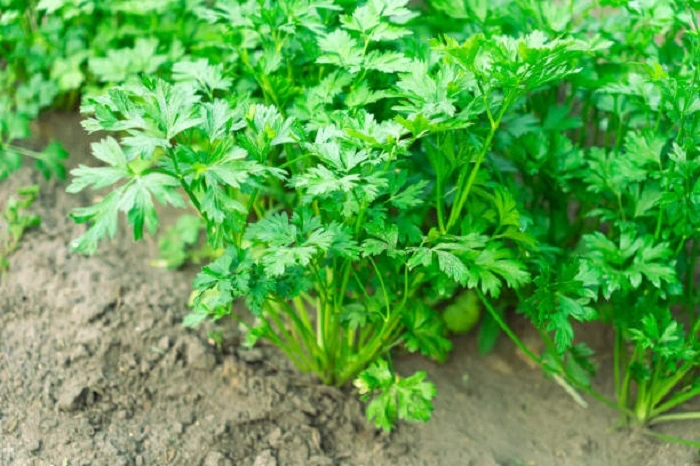
After germinating your parsley plant, you will see a full-grown plant after four weeks. The Parsley plant grows almost 6 inches tall and develops three to four leaves on each stem. This growing season is the best time to prune your Parsley for the first time. After the first pruning, you can continue the process every month whenever the plant is crowded with too many leaves or starts developing flowers.
You must wonder which season will be the best time to prune your plant. Parsley pruning is best in late spring to early summer. Make sure to prune your plants during these seasons to let them recover from pruning effects when winter comes. You will see results immediately after pruning your parsley plant; the new leaves will start producing, and the taste will improve. You can also prune your plant in late summer to early fall if you live in a long-growing seasonal area.
What You Need for Pruning Parsley
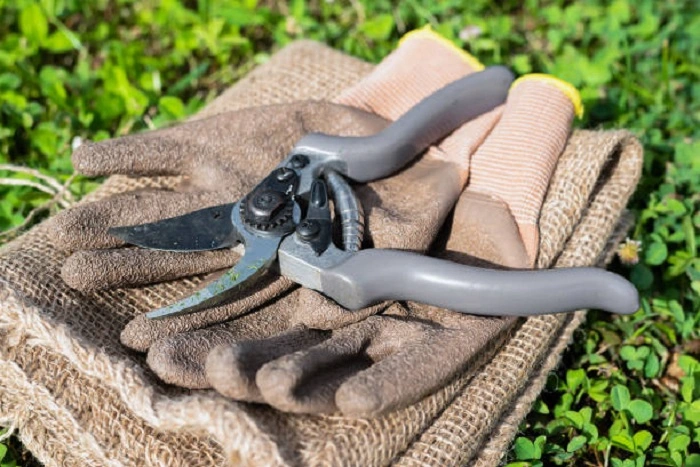
If you want to prune your parsley plant, a few tools are required. The first thing you need is a sharp pair of scissors for smooth cuttings. If your tools are sharp, the rusted tool will be fine for the plant in the future. Here are some other tools which you will need during the entire process:
- Plastic storage bags
- Handheld pruners
- Bowl
- Rubbing alcohol
- Household disinfectant
- Paper towels
- Vase or pint glass
- Gloves
Parsley Pruning Vs Trimming
Trim and pruning your parsley plant are two separate practices. During the pruning of the plant, the unwanted or overgrown leaves of the plant are removed. Furthermore, old, yellow, or diseased leaves are also eliminated through pruning. It improves the plant’s growth, saves energy, and prevents diseases. Whereas trimming helps you give a new look to your plant by balancing its shape and size. Parsley trimming is an easy but helpful way to ensure your plant remains healthy and productive.
How to Trim a Parsley
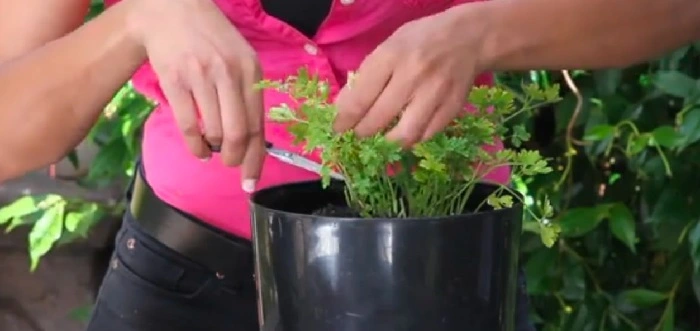
Here is a simple guide on how to trim Parsley effectively:
1. Plan the Cuts
Examine your parsley plant for discolored, unhealthy leaves. Decide where you would like to make your cuts before you start cutting. Remove any entire leaves that are dying from the main stem. Trim away any infected or discolored foliage parts to keep the rest healthy. It also helps shape the plant.
2. Trim the Stem and Flowers
After trimming down on leaves, work on the stems. Sanitize those scissors or tools used in trimming off these leaves. While cutting, ensure that you make clean cuts along its stem part. Because the massive cuts can mutilate the leaves and branches. In addition, making significant cuts can harm the leaves and branches, so try to make clear cuts where required. Now, pinch off the flower stalks, so that you may have prolonged leaves production of your plant.
3. Repeat as Needed
Keep trimming until you are satisfied with how it appears. Also, if some parts of stems still seem strange or grow in a manner not appealing to you, then make clean cuttings and trim them away. Remember, do not cut more than one-third of healthy foliage while pruning.
By following these steps, you will maintain a good appearance of your parsley plant, thus keeping it healthy for extended periods.
How to Prune a parsley
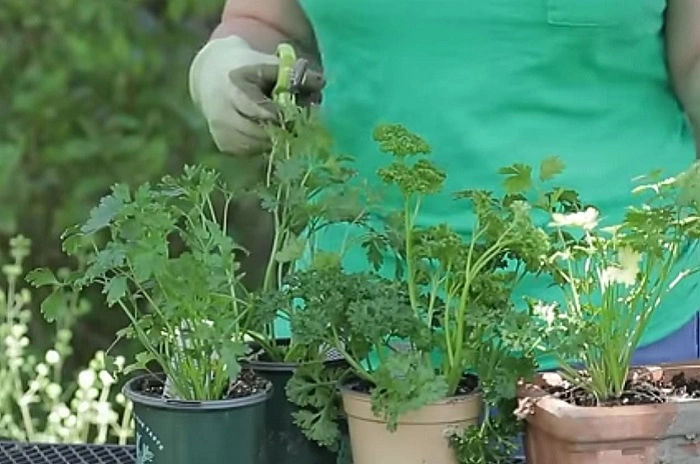
The effective pruning of parsley can be achieved through various precise steps. The details of these steps are given below:
Inspect the Plant
Carefully observe your Parsley plant from all sides to get an idea about its structure and shape. It is the time for pruning when there are long old leaves, which causes a hindrance to new leaf growth. Because pruning helps produce fresh leaves better.
Use Sharp Tools
Since scissors sometimes don’t work well on wider stems, try kitchen shears instead. They also keep tears from appearing while guarding against pests and diseases on the plant’s surface. Make sure to use sharp shears to prune successfully.
Remove Dead Flowers Stalks
During pruning activity, remove dead flowers or flower stalks including all unwanted parts at once. Because the flower production obstructs leaf growth. So, eliminate all the flowers or flower stalks to have prolonged leaf production on your parsley plant.
Fertilize After Pruning
Once you have pruned, fertilize your Parsley with a balanced fertilizer to restore the necessary nutrients. Make sure to apply fertilizer in optimal amounts as over-fertilization may hurt your plant, as mentioned by the requirements of a parsley plant.
After following these steps, your Parsley will remain healthy and grow well.
(Expert Tip: Use the discarded pruned leaves in compost as it will enrich the soil.)
How Often Do I Need to Prune My Parsley
Parsley is a fast-growing herb; it becomes overcrowded with leaves within no time. So, if you have parsley herb in your garden, you must know how crowded it looks if you do not prune it for a few days. You should prune your parsley plant once in 7 to 14 days. Remove all the dead and overcrowded leaves from the bottom of the stem. Crowded leaves always block the space for new growth of foliage.
Snipping them off the plant becomes important after a few days. When the parsley plant gets overcrowded and develops flowers, prune it immediately. From spring to early summer, you can prune your parsley plant anytime. But if you live in an area with a long growing season, you can prune your plant anytime between summer and late fall.
What to Do With the Discarded Parsley Leaves
There are many ways to use the healthy leaves you remove from the parsley plant.
1. Use in Cooking

Parsley leaves are used for cooking and eating, so you can separate the healthy leaves from the dead ones and wash them. Now, use them in your favorite dishes and enjoy the rich taste of Parsley.
2. Store the Leaves
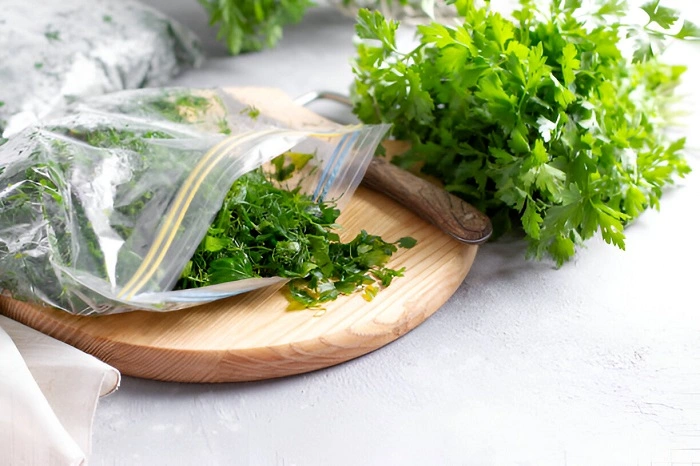
Let the leaves dry after washing, then store them in your fridge. Parsley can be fresh for five to six days if you keep it in the refrigerator. So if you do not want to use the leaves right away, store them in the fridge for later use.
3. Freeze the Leaves
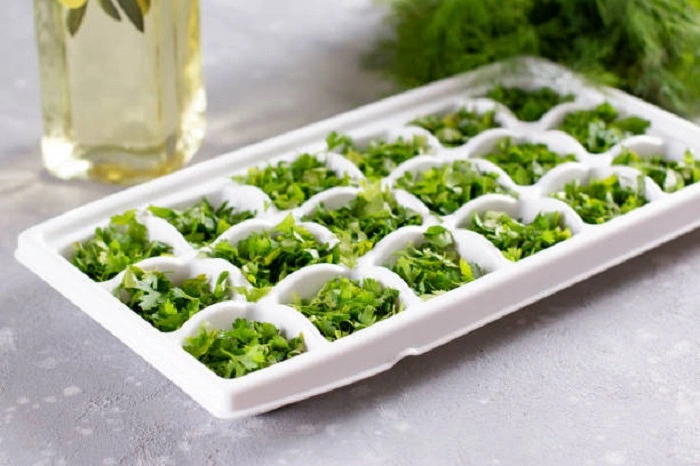
If you want to save the parsley leaves for a longer time, then freeze them. Place the parsley leaves in the freezer bag and then in the refrigerator. Furthermore, you can also freeze them after chopping them in the ice cube trays filled with water or olive oil.
4. Propagate the Leaves
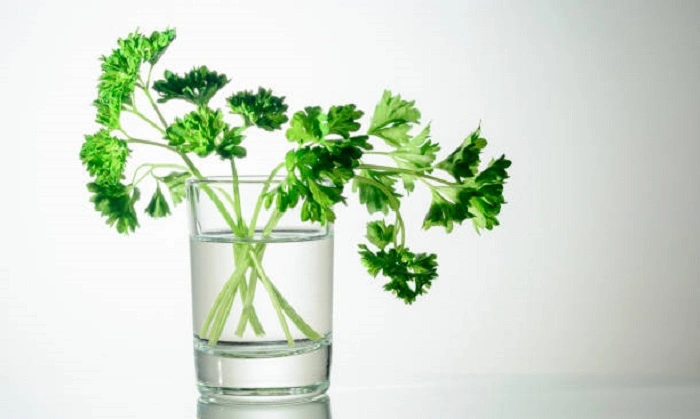
Healthy parsley cuttings can be used for propagation. Instead of growing the parsley plant from seed, you can expand it by planting a stem. The cutting must be 2-3 inches long if you propagate it. Place the cuttings in the water bowl immediately after removing them from the plant.
Place the bowl in bright sunlight, if it is there, the stem will continue sprouting its roots after a few weeks. When you see the stem has grown its roots, transfer it to the pot filled with potting soil.
Post-Pruning Care of Parsley

It is essential to provide your Parsley with optimal pruning aftercare as it will help the plant to recover. You can follow these steps to provide your plant with the best aftercare:
- Always keep your plant adequately watered to grow better. Dropping and dry soil are not suitable for the parsley plant. Parsley requires frequent watering because of its fast-growing ability.
- Never flood your parsley plant with excessive water. It will cause problems for roots. Make the soil moist all the time but not too soggy.
- Place the parsley plant in bright sunlight with partial shade to recover from pruning.
- Make sure to prune the plant’s outer leaves regularly to encourage new growth and ensure the temperature of the pruned parsley plant is between 50-70 degrees F.
Final Verdict: Can you Prune Parsley
Parsley is a widely grown herb that is used to add a unique aroma and taste to a variety of cuisines around the globe. It is grown often by home gardeners because it does not require much care. However, for its effective growth, occasional pruning is necessary. You can prune the plant easily by snipping flower stalks to promote leaf growth. Moreover, we have explained all the details of pruning the Parsley plant including, benefits, and aftercare too. So, read the complete article and prune your Parsley plant like an expert gardener!
FAQs
1. What Is the Importance of Parsley Pruning?
Parsley pruning is essential to maintaining this herb’s health and productivity. It makes the plant grow bushier by encouraging the generation of new leaves. Furthermore, it also helps to keep Parsley from flowering too soon, among other positive effects that are good for your garden.
2. When Should I Prune My Parsley Plant?
Late spring and early summer represent the best time to prune your Parsley. You can also do it in late summer or early autumn in areas with a long growing season. By doing this, you will help the plant recover and achieve its best results.
3. How Often Do I Need to Prune My Parsley?
Since Parsley multiplies, once in 7 to 14 days trimming or pruning is indispensable. Removing dead leaves or those that crowd others ensures constant growth while avoiding overcrowding.
4. What Tools Should I Use for Cutting Back Parsley?
To effectively trim Parsley, you will need sharp scissors or kitchen shears, and plastic bags for storage. Other necessary equipment include handheld pruners, a bowl, rubbing alcohol, household disinfectant spray, paper towels, and a vase/pint glass.
5. Can Pruned Parsley Leaves Be Utilized?
Yes! Healthy excess leaves may be used for food preparation and consumption. Please put them in your refrigerator after washing them clean for future use. Similarly, intact cuttings can be rooted in water until they develop roots before being transferred into pots with potting soil.
Muhammad Kashif is a gardening expert with an impressive 13 years of gardening experience. His educational background includes a post-graduate degree in Agriculture
